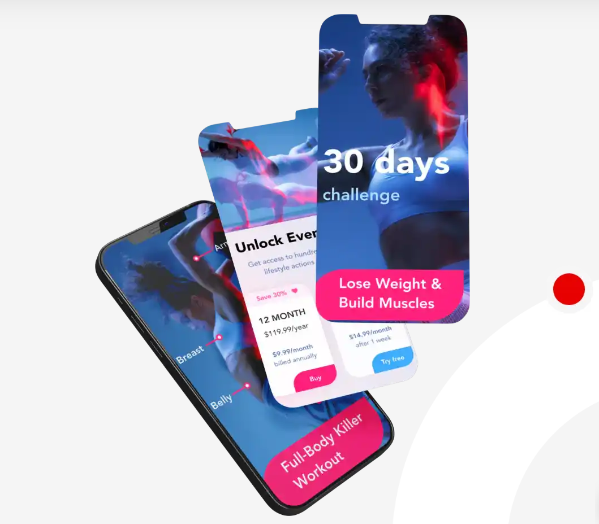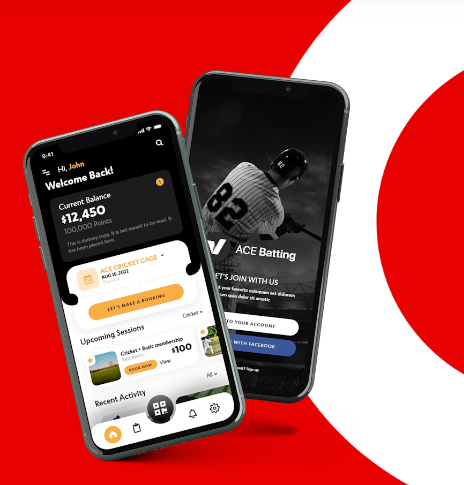Introduction
The sports app market has witnessed exponential growth in recent years, fueled by the increasing demand for convenient access to sports content and interactive experiences. With millions of users worldwide engaging with sports apps daily, the competition among developers has intensified. In this context, maximizing revenue becomes paramount for sustained growth and success in sports app development.

Understanding the sports app landscape is crucial for developers aiming to optimize revenue streams. Through an in-depth analysis of popular sports apps and their revenue models, developers can glean insights into effective monetization strategies. Moreover, identifying the key features and functionalities driving user engagement is essential for crafting compelling user experiences that not only attract but also retain users.
Market trends, consumer preferences and sports app development company play a pivotal role in shaping the direction of sports app development. By staying abreast of these trends and understanding what users expect from sports apps, developers can tailor their offerings to meet consumer demands effectively. This section will delve into the nuances of the sports app landscape, providing valuable insights for maximizing revenue in this dynamic industry.
Revenue Models in Sports App Development
Sports app development presents various revenue models, each with its strengths and considerations. Maximizing revenue requires a deep understanding of user behavior, preferences, and market dynamics. Here are some prevalent revenue models:
Subscription-based models
- Analysis of successful subscription-based sports apps: Examining apps like ESPN+ and The Athletic, which offer premium content and exclusive features for subscribers. Analysis encompasses content variety, pricing strategies, and user engagement metrics.
- Strategies for implementing subscription tiers and pricing: Crafting multiple subscription tiers with distinct features and pricing to cater to different user segments. Implementing trial periods, discounts, and annual plans can incentivize conversions and boost retention.
In-app purchases and virtual goods
- Examples of successful in-app purchase strategies: Studying apps like FIFA Mobile and NBA 2K, which monetize through in-app purchases of virtual currency, player packs, and cosmetic items. Highlighting effective pricing strategies, limited-time offers, and in-game events.
- Leveraging virtual goods for enhanced user experience: Integrating virtual goods seamlessly into the app experience to enhance engagement and offer value to users. Balancing the accessibility of virtual goods with their perceived value is crucial for sustained monetization.
Advertising and sponsorships
- Monetization through targeted advertising: Utilizing user data and engagement metrics to deliver targeted ads that align with users’ interests and preferences. Ensuring ads are non-intrusive and enhance, rather than disrupt, the user experience.
- Partnering with brands and sponsors: Collaborating with sports brands, teams, and sponsors to integrate branded content, sponsorships, and promotions within the app. Building authentic partnerships can enhance user loyalty while generating revenue.
User Acquisition and Retention Strategies
User acquisition and retention are critical aspects of sports app development, directly impacting revenue and long-term success. Implementing effective strategies to acquire and retain users is essential for sustained growth. Here are key strategies
Leveraging social media and influencer marketing
- Building brand awareness: Engage with sports enthusiasts on platforms like Twitter, Instagram, and Facebook by sharing engaging content, updates, and behind-the-scenes insights.
- Collaborating with influencers: Partner with sports influencers, athletes, and fan communities to reach a wider audience and tap into existing fan bases. Influencers can promote the app, create content, and participate in user engagement activities.
Personalization and gamification
- Personalized experiences: Utilize user data to deliver personalized recommendations, content, and notifications tailored to individual preferences and interests.
- Gamification elements: Integrate gamification features like leaderboards, challenges, badges, and rewards to incentivize user engagement, foster competition, and enhance retention.
Push notifications and engagement tactics
- Timely updates and reminders: Send push notifications for live match updates, breaking news, personalized content recommendations, and reminders for upcoming events or games.
- Interactive engagement: Encourage user interaction through polls, quizzes, contests, and user-generated content initiatives. Engage users in discussions, debates, and community activities within the app.
Seamless onboarding and user experience
- Simplified registration: Streamline the onboarding process to minimize friction and make it easy for users to sign up and get started with the app.
- Intuitive UI/UX: Design an intuitive and visually appealing user interface with easy navigation, clear CTAs, and seamless transitions to enhance user satisfaction and retention.
Loyalty programs and incentives
- Rewarding user loyalty: Implement loyalty programs, points systems, and exclusive perks for active users, frequent engagement, and referrals.
- Promotional offers: Offer discounts, freebies, and exclusive content to incentivize user actions such as inviting friends, making purchases, or completing in-app challenges.
Optimizing Monetization Through Data Analytics

Data analytics plays a pivotal role in optimizing monetization strategies for sports apps. By leveraging user data effectively, developers can make informed decisions to maximize revenue. Here’s how data analytics can be utilized for monetization optimization
Understanding user behavior and preferences
- Data collection: Gather comprehensive data on user interactions, preferences, browsing behavior, and purchase history within the app.
- Behavioral analysis: Use data analytics tools to analyze user behavior patterns, such as frequency of app usage, feature engagement, and content consumption preferences.
- Segmentation: Segment users based on demographic information, engagement level, spending habits, and other relevant factors to tailor monetization strategies to specific user segments.
A/B testing and optimization
- Experimentation: Conduct A/B tests to compare different monetization strategies, pricing models, in-app purchase offers, and ad placements to identify the most effective approaches.
- Iterative optimization: Continuously iterate and refine monetization strategies based on data-driven insights and A/B test results to improve revenue performance over time.
Targeted marketing campaigns
- Personalization: Utilize user data to personalize marketing campaigns, promotional offers, and targeted advertisements based on individual preferences and past interactions.
- Predictive analytics: Employ predictive analytics techniques to forecast user behavior and anticipate future purchasing decisions, enabling proactive targeting and personalized recommendations.
Pricing optimization
- Dynamic pricing: Utilize data analytics to implement dynamic pricing strategies that adjust pricing based on factors such as demand, user segmentation, and competitor pricing.
- Price sensitivity analysis: Analyze user response to price changes and conduct price sensitivity analysis to determine optimal pricing points for maximizing revenue without adversely impacting user acquisition and retention.
Fraud detection and prevention:
- Anomaly detection: Utilize data analytics algorithms to detect anomalous behavior, such as fraudulent transactions, account abuse, or suspicious activity, and take proactive measures to prevent revenue loss.
- Fraud mitigation: Implement fraud detection mechanisms, identity verification processes, and transaction monitoring systems to safeguard against fraudulent activities and protect revenue streams.
Conclusion
Maximizing revenue in sports app development requires a comprehensive strategy that integrates various revenue models, user acquisition and retention tactics, and data-driven analytics. Understanding the sports app landscape is essential, as it allows developers to identify lucrative opportunities and tailor their offerings accordingly. Subscription-based models, in-app purchases, advertising, and sponsorships are all viable avenues for monetization, each with its unique advantages and challenges.
User acquisition and retention strategies are paramount for sustaining revenue growth and ensuring long-term success. Leveraging social media, personalization, gamification, and targeted engagement tactics can help attract and retain a loyal user base. Moreover, optimizing monetization through data analytics empowers developers to make informed decisions, experiment with pricing strategies, and deliver personalized experiences that resonate with users.If you’re looking to boost your revenue, your first search on Google should be mobile app development company near me. Finding a local partner can offer several advantages, including easier communication, better understanding of local market dynamics, and potentially lower costs. With a nearby mobile app development company, you can collaborate closely to create a sports app that not only meets your revenue goals but also resonates with your target audience. So, don’t hesitate to reach out and start your journey toward maximizing revenue through expert app development services.
More Articles
